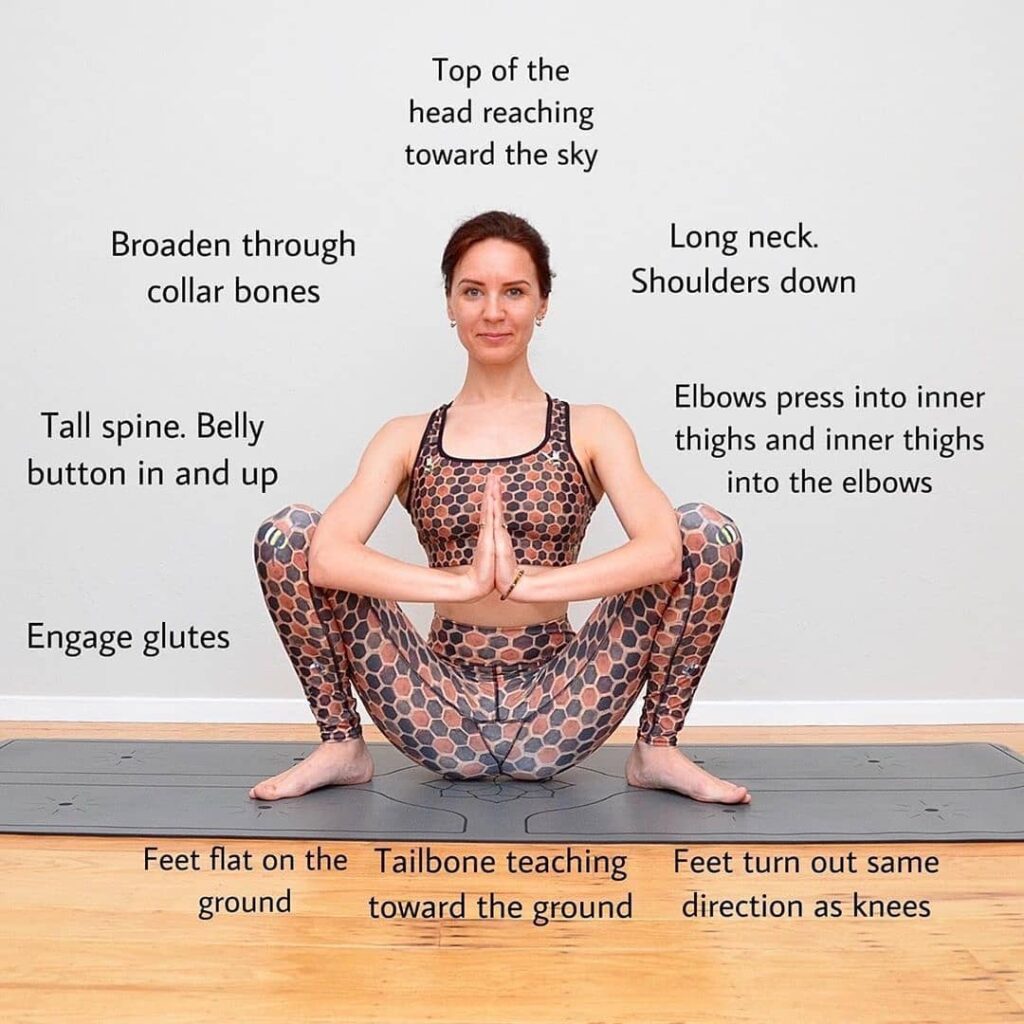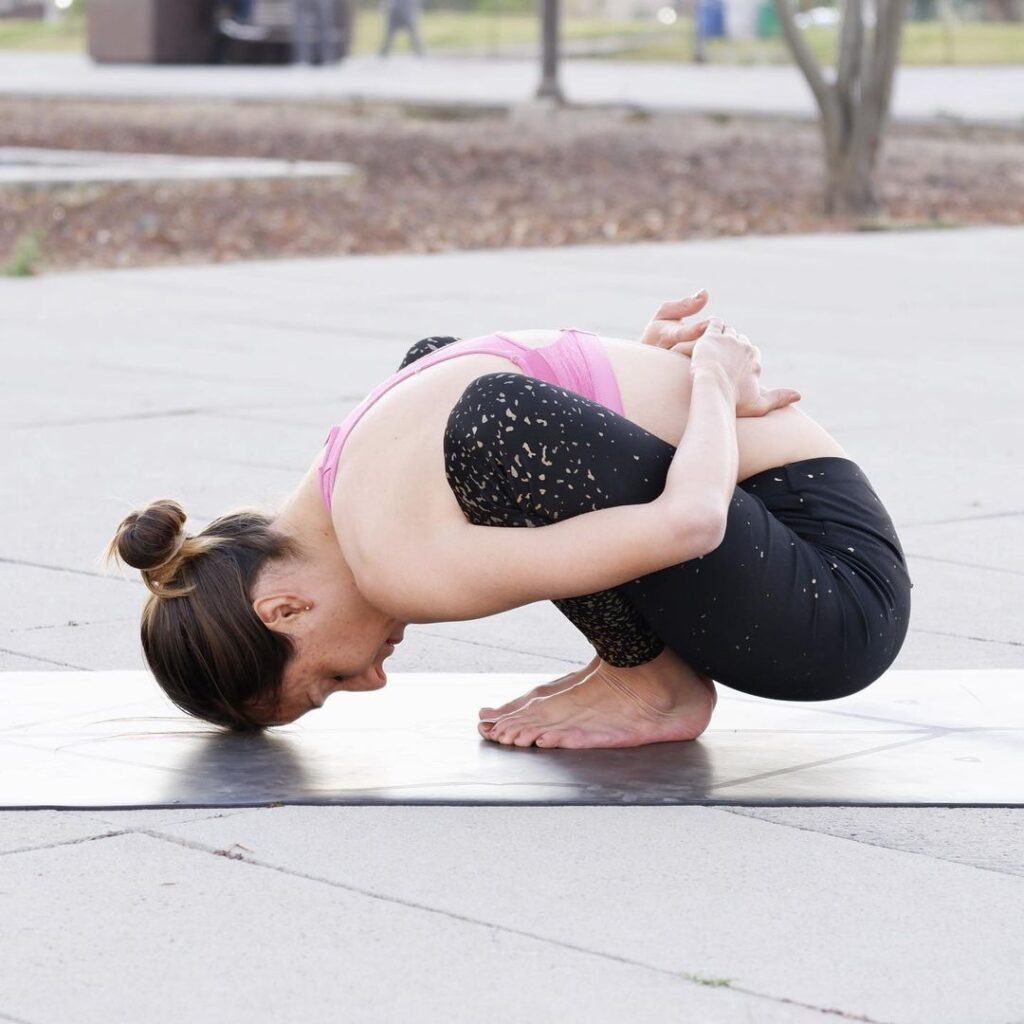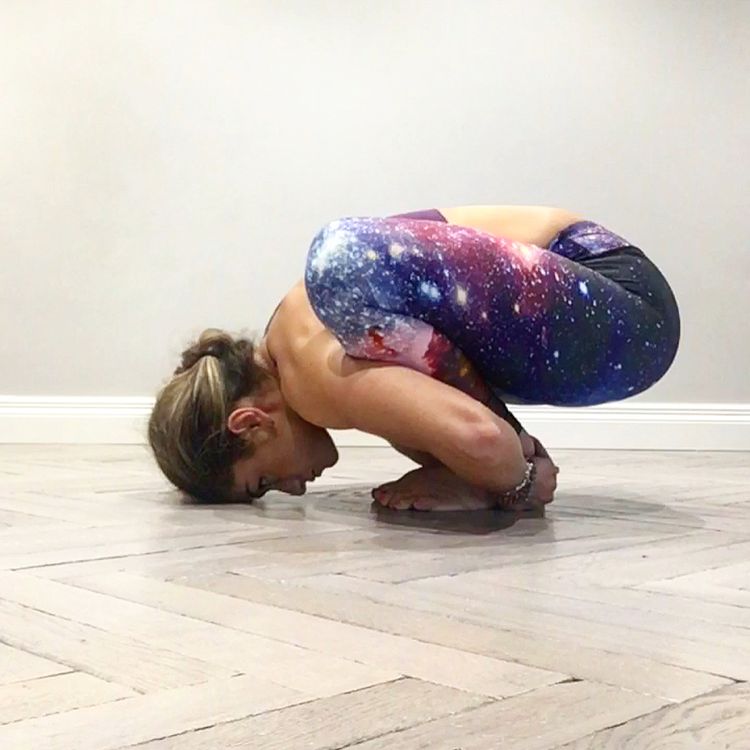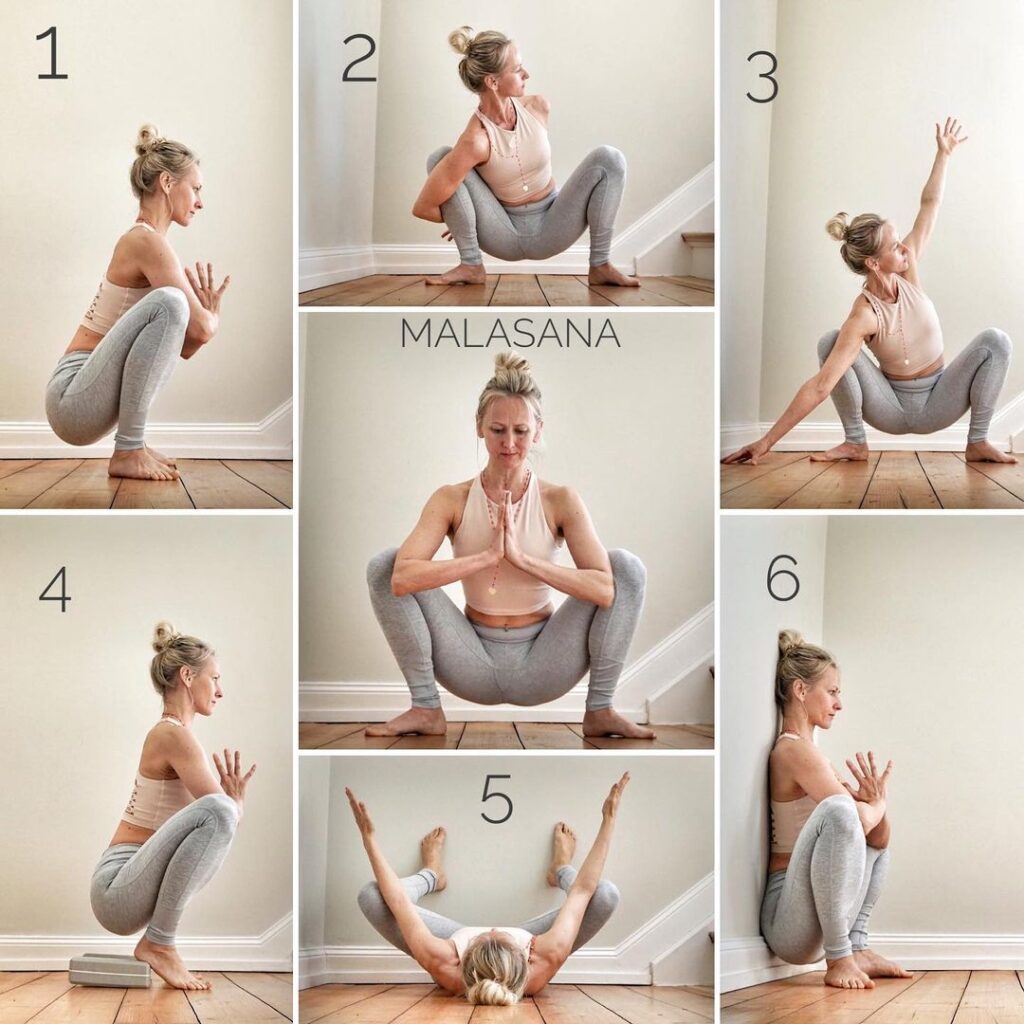Malasana, also known as Garland Pose or Yogi Squat Pose deepens the hips, waist and lower back, opens the pelvis and loosens the hips and lower back as it tones the abdominal muscles and aids in elimination.
Experts believe that regular practice of Malasana works on the muscles around the knees and it tones the muscles and tissues around the knees. It is especially beneficial for pregnant women, as it can aid in childbirth later.
It relieves this tension and tension, which tends to accumulate in the hips, by pressing the palms together to strengthen and tone the chest muscles. It also stretches the Achilles tendon.
Information
| Know as: | Malasana, Garland Pose, Yogi Squat Pose, Sitting Down Pose, Wide Squat Pose, Upavesasana, Squat Pose |
| Sanskrit name: | मालासन |
| IAST: | Mālāsana |
| Pronunciation: | ma-LAH-suh-nuh |
| Level: | Beginner |
| Type: | Seated pose, Hip opener |
| Total time: | 1 to 2 minutes |
| Drishti: | Forward |
| Chakra: | Swadisthana Chakra, Muladhara Chakra |
| Focus: | Legs, arches of knee and feet |
| Indications: | Metabolism, digestion, menstrual discomfort, sciatica |
| Counterpose: | Dandasana (Staff Pose) |
| Preparatory poses: | Butterfly Pose, Wide-angle Seated Forward Bend Pose, Virasana |
| Follow-up poses: | Intense Forward-bending Pose, Down Dog Pose, Cobra Pose |
| Contraindications: | Low back injury, ankle injury, knee injury, hip injury, high blood pressure (broaden your stance), vertigo |
Meaning + Origin
The Malasana is derived from the Sanskrit name, which is made up of two words — Mala + asana:
- “Mala” = “garland”
- “asana” = “pose or posture”
This is the real origin of the asana name, because it looks like pose located in ancient India to eliminate waste. Activates Swadisthana Chakra, which affects both the yogi’s sexuality and their feelings.
The Wide Squat Pose is the preparatory pose for arm balance pose, Crow Pose (Kakasana). The pose is also a grounding pose which stimulates your Veu, or stimulates the energy flowing downwards. By tapping this energy, practitioner is also holding back to her physical, spiritual or emotional issues.
The garlands of flowers, or beads are often used as ritual offerings and altar decorations in India. Mala beads, which is also called prayer beads, is traditionally used to assist in meditation. Hip-opener yoga is used to help in preparing the body for long-term focus, traditionally poses like Garland Pose. By practicing this yoga asana, you can helps to join the ancient rituals of yoga, which can take you deeply in your meditation practice.
Benefits of Malasana (Garland Pose)
The wonderful physical and mental benefits of Malasana or Garland Pose are listed below:
- Physical Benefits:
- Strengthens the arches of the feet and ankles
- Alleviates low back pain
- Increases circulation to digestive system
- Tones the abdominal organs
- Opens the hips
- Improves balance
- Helps relieve constipation
- Helps relieve menstrual discomfort
- Relieves sciatica
- Mental Benefits:
- Cultivates focus
- Reduces stress
- Relieves anxiety
- Relieves mild depression
- Creates poise
Malasana Practice Guide
Garland Pose Gentle Variation

Instructions
- Stand with feet about hip-width apart. Separate the feet so wide that both the ankles are on the ground as soon as you come into the squat. This may mean raising the hips higher, and that’s okay.
- Adapt the squat to the body. If it is difficult to maintain balance, hold on to the back of the chair. Press into the four corners of the legs to create a solid foundation.
- Try to keep the soles and heels of the feet flat on the floor. Pull on the abdominal muscles.
- Keeping the palms open, rest the forearms on the knees. If you wish, place the palms together in front of the heart center (breastbone) in Namaste and press the palms together lightly.
- For an advanced stretch, keep the elbows on the inside of the knees and press against them, applying a steady and smooth pressure.
- If it is comfortable, stay in this posture for 1 to 2 minutes, take deep breaths.
Props and modifications
- Chances are that the high heels can come during the coming in the pose. Therefore, to maintain balance, keep a fold blanket under your feet.
- Apart from this, keeping a yoga block under your each foot makes this posture more comfortable.
- In the beginning, you can perform this yoga pose against the wall for better support.
- Going to the right posture is very important. So, consider taking the help of a partner or yoga teacher/instructor to come to this posture.
- To speed up Malasana (Garland Pose), place one hand firmly on the floor, and raise another hand while rotating the torso.
Malasana Variation I

Instructions
- Squat on hunches with your feet together. Your soles and ankles should rest completely on the floor. Raise your seat off the floor and balance.
- Now widen your knees and move your torso forward.
- Exhale, wrap your arms around your bent legs and rest your palms on the floor.
- Take your hands one by one behind your back and clasp your fingers.
- Then stretch your back and neck up.
- Stay in this position for 30 to 60 seconds and keep your breathing normally.
- Now breath out, bend forward and rest your head on the floor. Stay in this position for 30 to 60 seconds here as well with normal breathing.
- Inhale, lift your head off the floor and return to Step-5.
- Release your hands and rest them on the floor.
Malasana Variation II

Instructions
- Stand in Tadasana (Mountain Pose) with the inner edges of your feet touching.
- Bring your arms parallel to the floor to help with balance. Keeping your feet together and flat on the ground, exhale and squat down while keeping your hips off the floor.
- Separate your knees and lean forward between them. Extend your arms forward until your upper arms touch the inner side of your knees and bring your hands into prayer position. Press your hands together and widen your elbows against the resistance of your knees. Press the inner sides of your feet down and press your knees into your upper arms. Root your tailbone down and stretch upward from the core of your pelvis to the crown of your head.
- Inhale, reach back with your hands, and hold onto your heels. While exhaling, bring the head to the ground. Keep your heels down on the floor. Spread your toes and press down firmly on the balls of your big toes. Continue to move your knees inward. Hold this pose for 30 to 60 seconds, then release.
Precautions and contraindications
It is necessary to practice Malasana (Sitting Down Pose) on an empty stomach. Therefore, practice Garland Pose in the morning on an empty stomach or at least 4 hours after eating food.
Except for pregnant women, most of the cases listed below can be overcome with careful practice under the guidance of a experienced yoga teacher/instructor.
- Don’t put all your weight on the toes or heels. It will not be good for the feet. Instead, spread your entire body weight evenly across your legs.
- Descend slowly and gently into Garland Pose. Do not do this yoga pose in a hurry.
- Do not do this yoga asana too much in one session. Practice the Garland Pose (Wide Squat Pose) slowly for a limited number of minutes.
- The pose brings tremendous pressure on your knees and ankles, so a practitioner with knee or ankle injury should avoid Yogi Squat Pose.
- Practitioner with a ligament tear in the knee or ankle should avoid Upavesasana.
- The pose puts a lot of pressure on your abdominal region and should be avoided by pregnant women.
- If there is pain in the lower back and it needs rest, then avoid this yoga pose completely.
- The Wide Squat Pose should not be practiced by athletes as a relaxation posture immediately after running, as pressure on the ankles and calves can only cause further damage to the knee and the tissues around the ankles.















